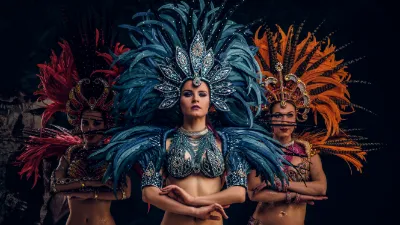Holi
The annual festival of Holi is a kaleidoscope of brilliant colors which paints the streets of India and Nepal with vibrancy and excitement. This is a festival that attracts travelers from all corners of the globe. Holi provides an unparalleled opportunity for travelers to delve headfirst into a unique cultural experience. As a traveler, it provides the chance to partake in old traditions, connect with locals, and get a firsthand understanding of the rich cultural heritage of these countries.
Understanding Holi
Holi is a traditional Hindu festival, known commonly as the "Festival of Colors" or the "Festival of Love". Dating back centuries, it is celebrated in countries with a significant Hindu population, primarily India and Nepal, but it is also observed in other countries amidst the Indian diaspora communities. The festival is a commemoration of the victory of good over evil, inspired by Hindu mythology.
The essence of Holi is in the dispersing of colors symbolizing the ushering in of spring, shedding old grievances, and celebrating love and positivity. For a traveler, the festival offers a platform to engage with the local community, understand regional traditions, and be part of a stunning display of merriment and unity.
When is Holi celebrated?
Holi doesn't have a fixed date in the Gregorian calendar as it follows the lunar Hindu calendar. However, it usually falls in March, signaling the end of winter and the arrival of spring. The festival span over the course of two days - Holika Dahan takes place on the evening of the first day and Holi celebrations follow the next morning. The exact dates can slightly vary across regions, but the undertone of festivity remains the same.
How Is Holi Celebrated?
While Holi is a time of unadulterated fun and frolic, understanding the traditional customs can help travelers navigate through the celebrations more authentically. It commences with 'Holika Dahan', a spiritual ritual where bonfires are lit to signify the destruction of evil. People sing and dance around the fires, drawing parallels to the underlying Hindu mythology.
The following day, the streets of cities, towns, and villages are transformed into a riot of color. Holi is marked by people throwing powdered ‘gulaal’ and colored water on one another, regardless of age, status, or caste, embodying the essence of unity and camaraderie.
In addition to the color-throwing, there are traditional games such as 'Matki Phod' (pot-breaking), singing folk songs, dancing, and music. And, of course, no festival is complete without food and Holi is no exception. Traditional sweets like 'gujiya' and a mildly intoxicating drink ‘bhang’ are common.
Where to celebrate Holi?
Holi is celebrated throughout the sub-continent, each region adding its unique flavor to the festival. For travelers, some of the best places to experience Holi include Mathura-Vrindavan, the birthplace of Lord Krishna, where the celebration takes on a spiritual fervor. In fact, here, Holi lasts for over a week with different rituals taking place each day.
In northern cities like Delhi and Jaipur, Holi is marked by lavish gatherings, private parties, and huge public events. States like Goa and Maharashtra also celebrate 'Shigmo' and 'Purim' respectively, their own versions of Holi, which offer distinctive regional experiences.
Experiencing Holi as a Traveler
As a traveler, it's important to embrace Holi while respecting the traditions. Although Holi is meant to be a relaxed and inclusive festivity, one should always ask permission before applying color on someone. Dressing in modest white clothes is recommended as it allows the vibrant colors to show while respecting local customs. Do remember that the color may not wash out easily.
Joining a Holi celebration at a local home or at community organized events provides a safer and more controlled environment to enjoy the festivities. Moreover, it is advisable to use natural or organic colors to prevent skin or eye irritation.
Traveling to experience Holi is not just about being part of a color-filled spectacle. It is about understanding and appreciating the customs, traditions, and mythology underpinning this age-old celebration. As the colors fade and you wash off the remnants of Holi, you will be left with a deeper understanding of the Indian culture and an unforgettable memory of the time when you too, were a part of this vibrant festival.
Venture Globally: Unforgettable Festivals Worth Your Travel

